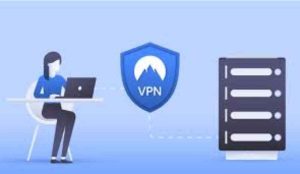Why IT Security Should Be Unseen

There is no doubt that security should be paramount in any corporate IT program, especially in the hybrid cloud environment. The risks associated with an Internet connection are too significant to ignore, and businesses should do everything they can to protect their sensitive data and networks.
However, this raises the question of whether there is such a thing as “too safe.” Is it possible that IT security teams are going too far in the interest of protecting the business from risk and not only slowing day-to-day operations but also the overall productivity of the company?
CISOs and their teams can’t afford to let people on the network do what they want, but the growing consensus is that there are similarities. It also improves productivity and innovation without compromising safety. One aspect of this commonality is the term “invisible security,” a vital element of a practical hybrid cloud security approach.

Table of Contents
What is invisible security?
Imagine trying to work out on a project at work, and you need to access a secure database to do this. You enter a password, “a unique eight-digit code to join and access.” Once there, you realize that you don’t have the correct credentials to access the information you need. You’re requesting credentials, and in the meantime, you’re looking for more information for your project. You alone cannot download the report you need due to network restrictions. So you’ve submitted another request for help to get permission to download the web resources. A few hours later, you will get all the licenses you need, but now you are hours back.
Seems familiar? Similar scenarios occur every day, leading to frustration and, in many cases, workarounds that create more significant risks than those that already exist. In many companies, IT security creates barriers that frustrate users. In response, they are finding ways to simplify their own user experience. For example, they can ignore password logs and reuse the same credentials in multiple places to save time, or stay signed in to programs to avoid having to start the whole process again. In some organizations, shadow IT, where employees use unapproved programs and tools, is a significant problem, in large part due to security protocols. In both cases, people develop their solutions to be more productive, and those solutions create risks.

Invisible security is, therefore, security that does not interfere with the user experience but takes place behind the scenes. Employees have a seamless experience while the network remains secure. Some of the commonly used invisible approaches include:
Also Read: What Are The Latest Technologies In Web Development?
Targeted activity silo
When users initiate certain activities, for example, downloading content from the Internet is done on a dedicated virtual machine. This way, malicious content is stored on that particular computer and never reaches the network.
Behavioral access
This approach to security depends on permissions and access to specific behaviors, such as B. time of access request and requester behavior.
Optimized registrations
Implementing login methods on accounts using biometrics or single sign-on can save time and prevent roadblocks from occurring.
However, invisible security is not just about optimizing the access. It’s also about using behind-the-scenes tools and techniques that users never come into contact with, but don’t slow them down.
Using tools that protect against threats that do not cause loss of security control and the development of shadow. IT will reduce organizational risk while ensuring your business remains productive and innovative. In short, when you make security invisible, it ultimately becomes more significant.







